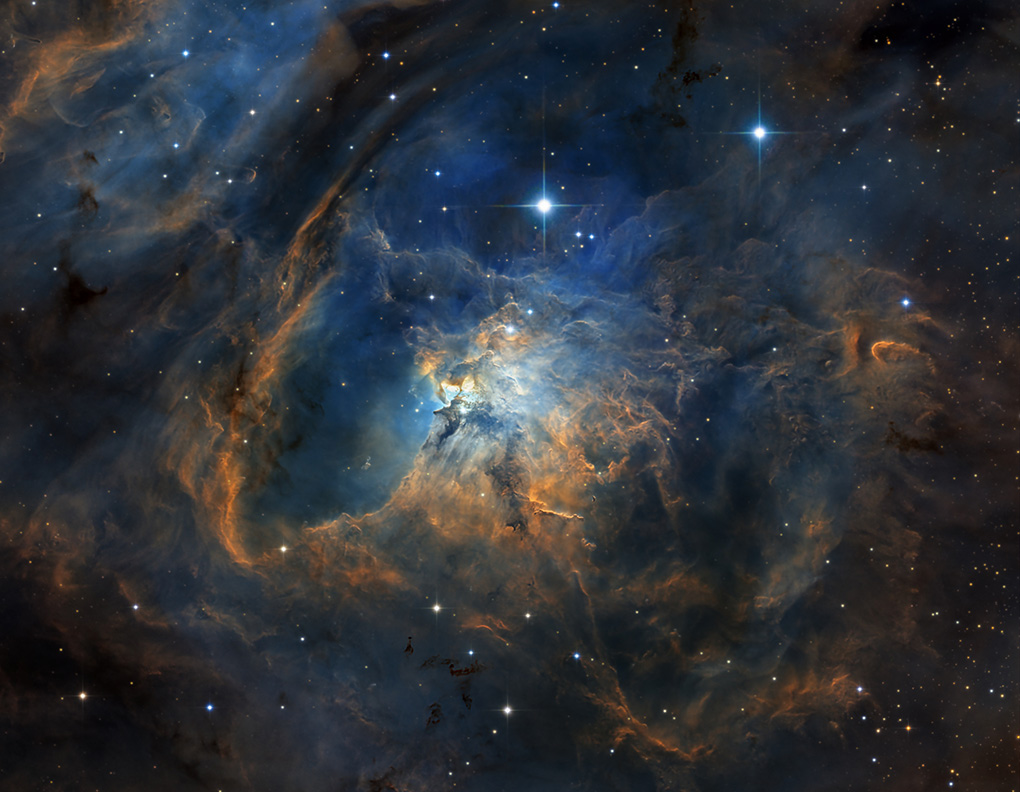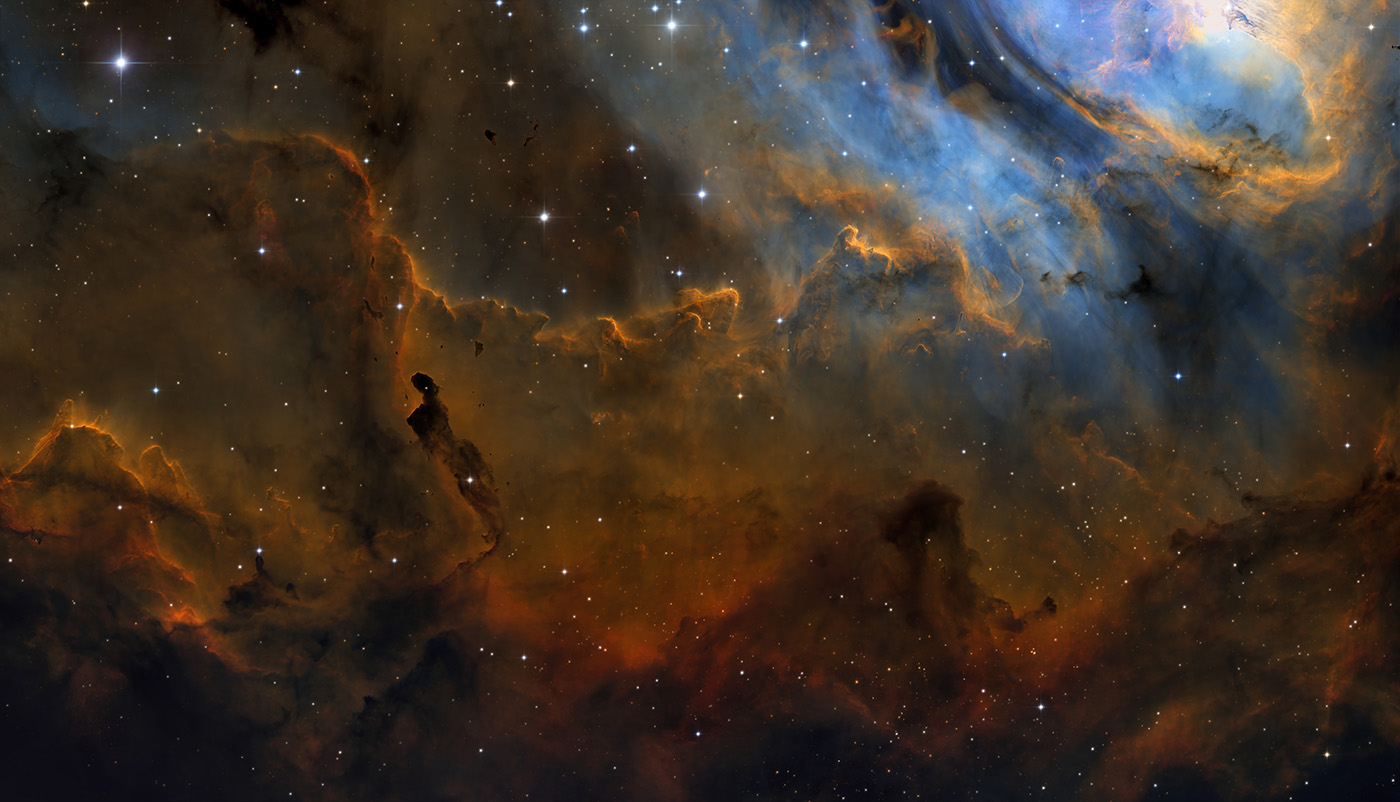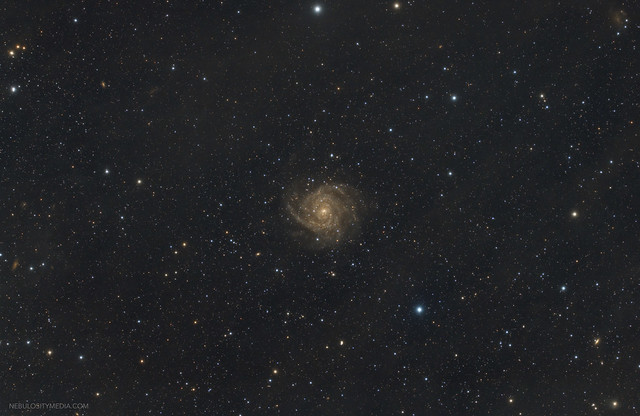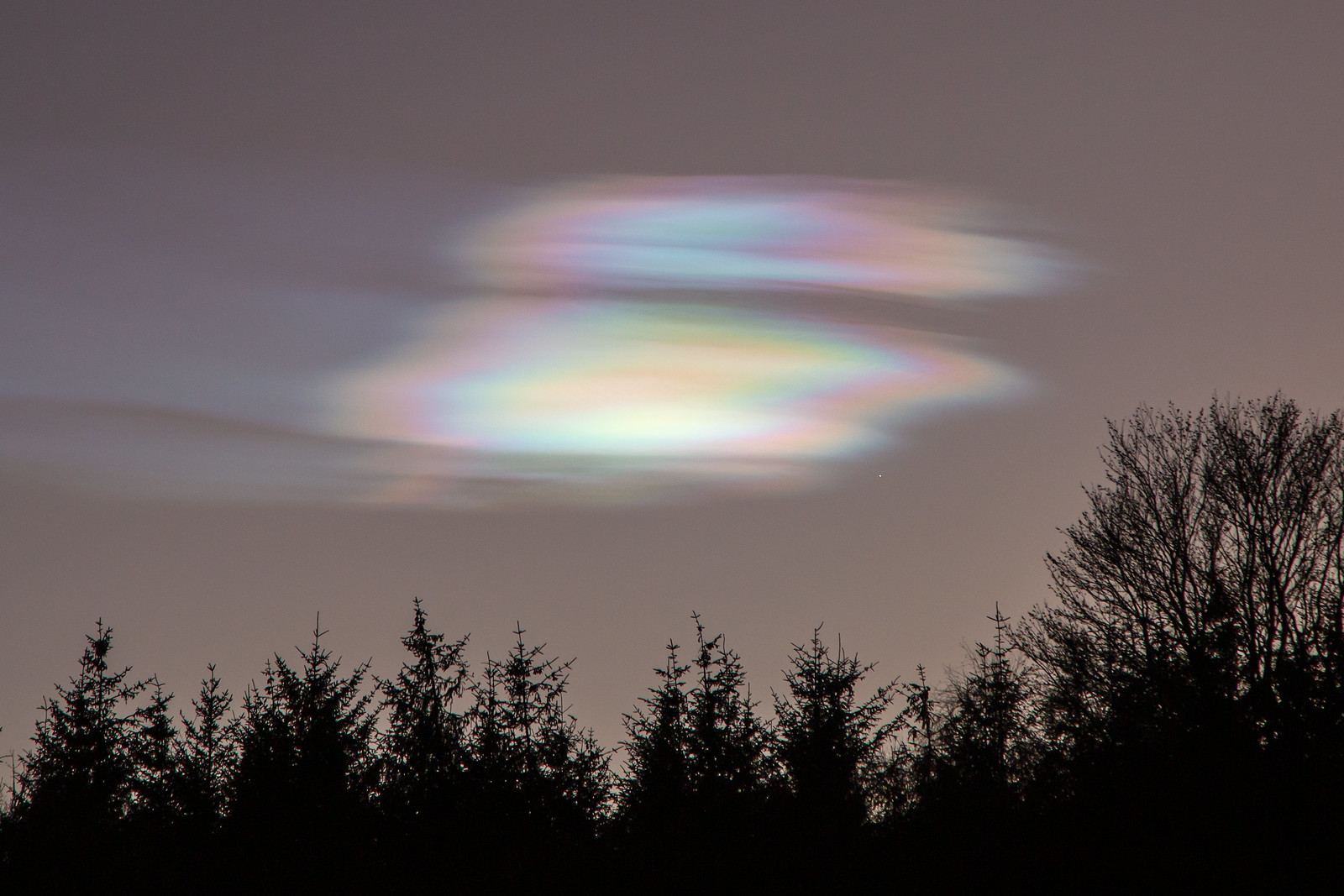"THE SMALL MAGELAN CLOUD"
- Deepsky Widefield Mosaic 530mm LRGBhA
- Constellation Tucana

Have a nice Sunday afternoon, dear astro friends!
Today I show you the first results from the recordings of a rented telescope in Australia. A very sensible investment for me, because from my point of view you don't get to see this property in Central Europe! A magnificent ultrawidefield shot as a 2-part mosaic, with a multitude of small objects! There is so much to discover in this neighboring galaxy!
The Small Magellanic Cloud, short KMW or SMC (from English Small Magellanic Cloud), Latin Nubecula Minor, is an irregular galaxy of the Local Group. It is relatively close to the Milky Way, about 200,000 light-years away, and lies in the night sky at the Toucan/Water Serpent constellation boundary. With a diameter of about 7000 light-years, it is much smaller than the Milky Way. Like the Large Magellanic Cloud, it is an object in the southern sky and is therefore not visible from Central Europe. The people of the southern hemisphere have always been familiar with the Magellanic Clouds, for example they are mentioned in some Aboriginal myths. With the advent of global seafaring in the early 16th century, the Small Magellanic Cloud was also noticed by Europeans.
The Magellanic Bridge and the Magellanic Stream are joined to the Small Magellanic Cloud by two elongated H-I regions that connect the two Magellanic Clouds to each other and to the Milky Way. The structure of the Small Magellanic Cloud was significantly influenced by the gravitational influences of the Large Magellanic Cloud and the Milky Way, but it is unclear whether it is gravitationally bound to its neighboring galaxies or just passing by by chance. As one of the closest extragalactic objects, the Small Magellanic Cloud is an important research object for studying the universe beyond the Milky Way.
At the bottom left of the image and as Extra Crop, 47 Tucanae (also known as NGC 104) is the second brightest globular cluster in the sky after Omega Centauri and is already visible to the naked eye as a small nebula. It's a particularly large, ancient cluster, located about 15,000 light-years from Earth.
At the top right of the image and as an extra crop, the open star clusters NGC460 and NGC465, which are associated with an H-II region, and NGC 456, an emission nebula with an open star cluster.
Taken with a Takahashi FSQ ED, focal 530m, f/5 and a FLI Microline 16803 CCD, filter: Astrodon Gen2 series E.
Lights per panel: 16 lights at 120s each for luminance, 8 lights at 120s each for R, B and G and 8 lights each at 300s hAlpha and OIII.
Imaging with rented remote telescope system at iTelescope (T8 setup) in Siding Spring Observatory, Australia.
Conditions for registration:
Clear nights, Borlte 1 sky, moon up to max.40%, date 2023-01-15 to 2023-01-23












